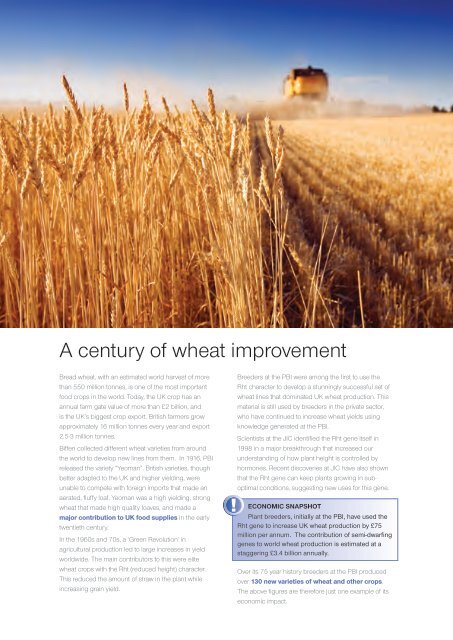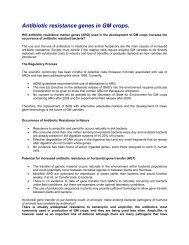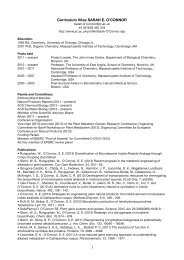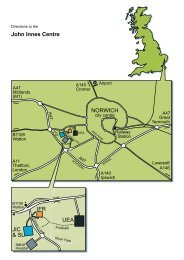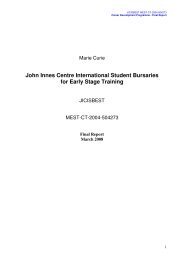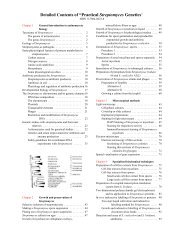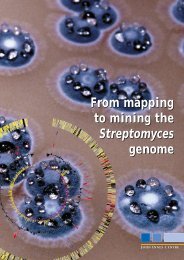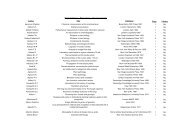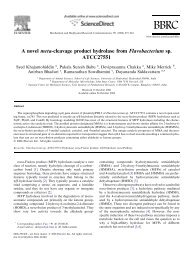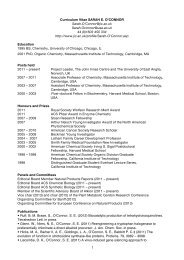Economic Impact brochure - John Innes Centre
Economic Impact brochure - John Innes Centre
Economic Impact brochure - John Innes Centre
Create successful ePaper yourself
Turn your PDF publications into a flip-book with our unique Google optimized e-Paper software.
A century of wheat improvement<br />
Bread wheat, with an estimated world harvest of more<br />
than 550 million tonnes, is one of the most important<br />
food crops in the world. Today, the UK crop has an<br />
annual farm gate value of more than £2 billion, and<br />
is the UK’s biggest crop export. British farmers grow<br />
approximately 16 million tonnes every year and export<br />
2.5-3 million tonnes.<br />
Biffen collected different wheat varieties from around<br />
the world to develop new lines from them. In 1916, PBI<br />
released the variety “Yeoman”. British varieties, though<br />
better adapted to the UK and higher yielding, were<br />
unable to compete with foreign imports that made an<br />
aerated, fluffy loaf. Yeoman was a high yielding, strong<br />
wheat that made high quality loaves, and made a<br />
major contribution to UK food supplies in the early<br />
twentieth century.<br />
In the 1960s and 70s, a ‘Green Revolution’ in<br />
agricultural production led to large increases in yield<br />
worldwide. The main contributors to this were elite<br />
wheat crops with the Rht (reduced height) character.<br />
This reduced the amount of straw in the plant while<br />
increasing grain yield.<br />
!<br />
Breeders at the PBI were among the first to use the<br />
Rht character to develop a stunningly successful set of<br />
wheat lines that dominated UK wheat production. This<br />
material is still used by breeders in the private sector,<br />
who have continued to increase wheat yields using<br />
knowledge generated at the PBI.<br />
Scientists at the JIC identified the Rht gene itself in<br />
1998 in a major breakthrough that increased our<br />
understanding of how plant height is controlled by<br />
hormones. Recent discoveries at JIC have also shown<br />
that the Rht gene can keep plants growing in suboptimal<br />
conditions, suggesting new uses for this gene.<br />
ECONOMIC SNAPSHOT<br />
Plant breeders, initially at the PBI, have used the<br />
Rht gene to increase UK wheat production by £75<br />
million per annum. The contribution of semi-dwarfing<br />
genes to world wheat production is estimated at a<br />
staggering £3.4 billion annually.<br />
Over its 75 year history breeders at the PBI produced<br />
over 130 new varieties of wheat and other crops.<br />
The above figures are therefore just one example of its<br />
economic impact.


